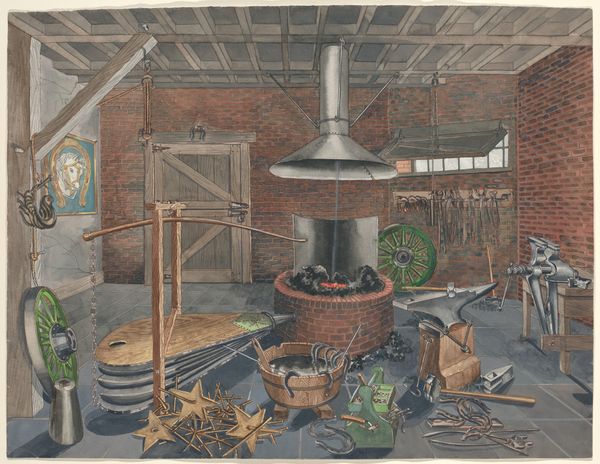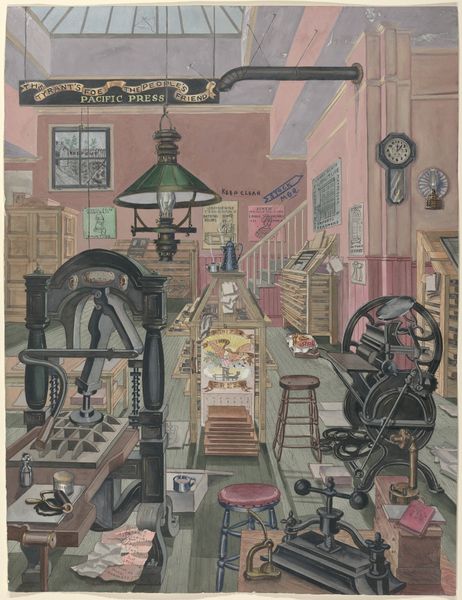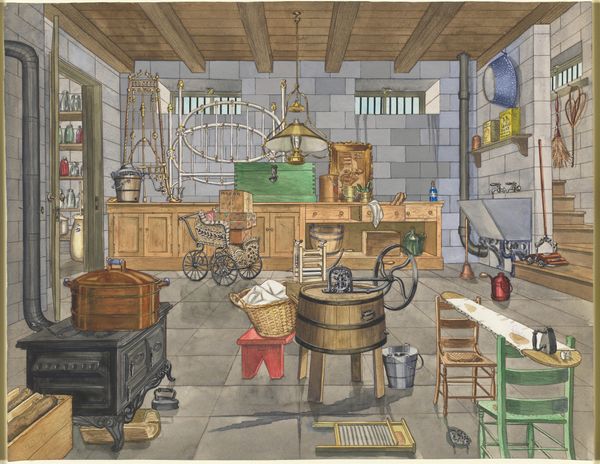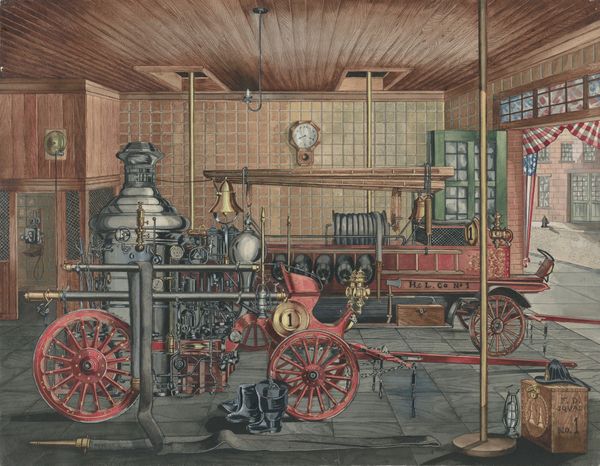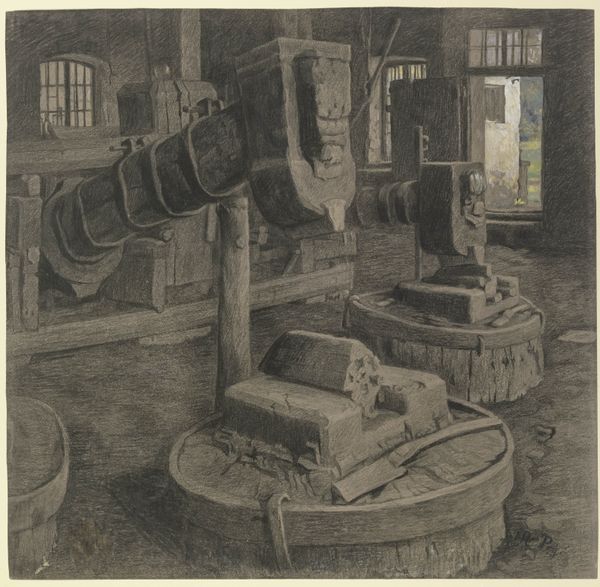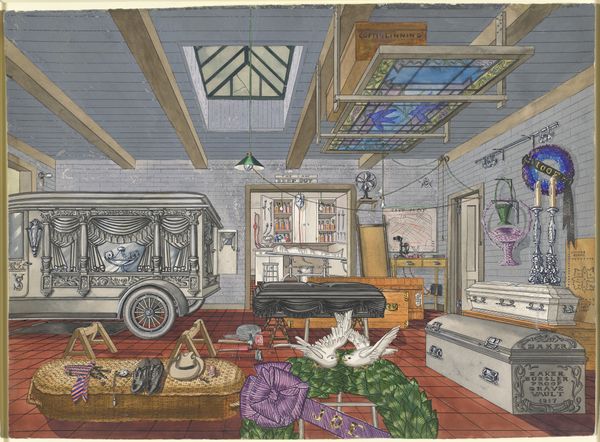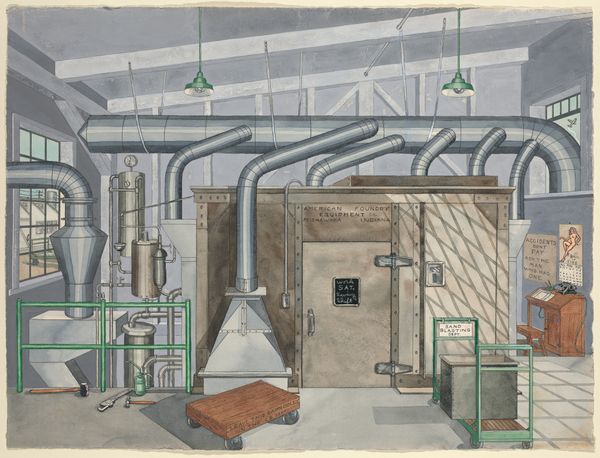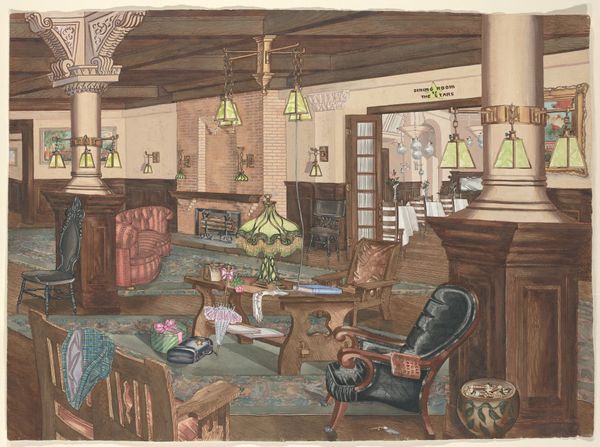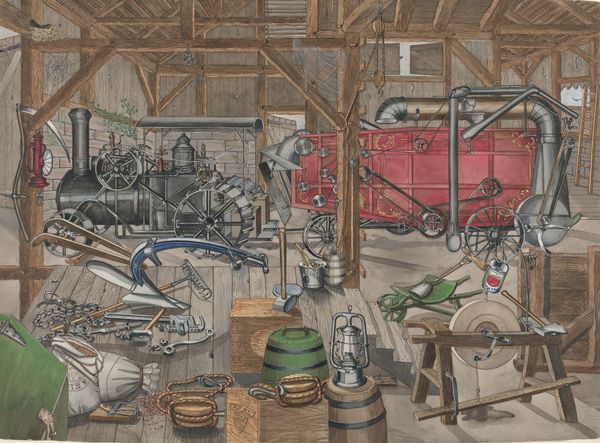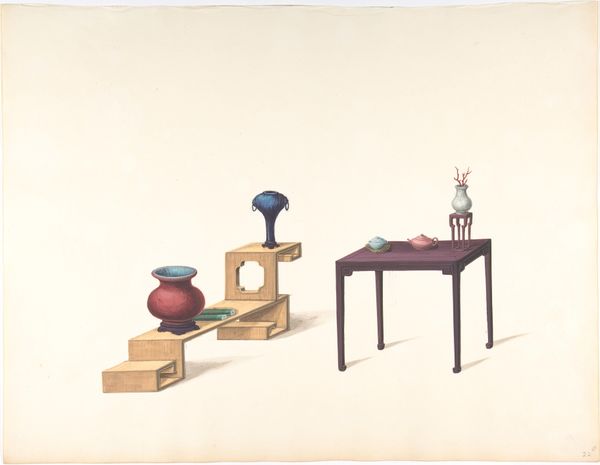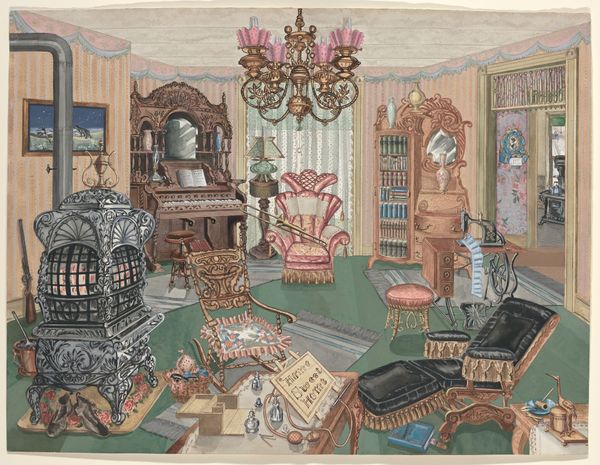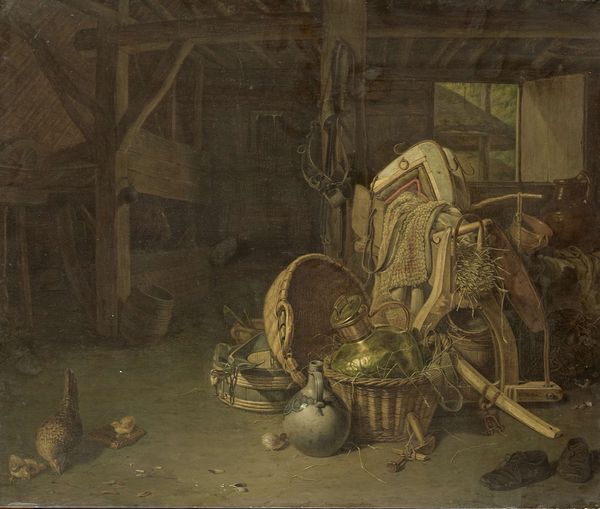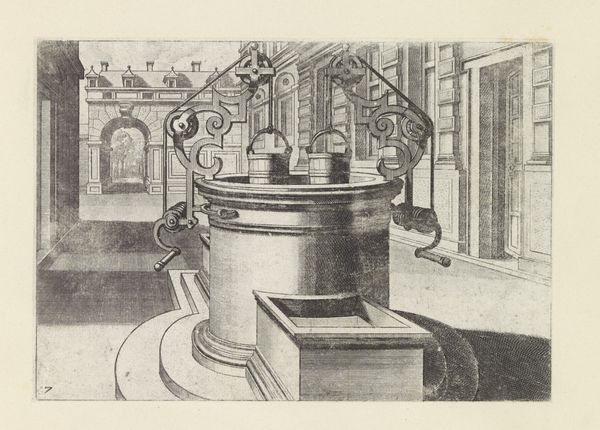
drawing, painting, watercolor
#
drawing
#
painting
#
watercolor
#
coloured pencil
#
cityscape
#
watercolour illustration
#
modernism
#
realism
Dimensions: overall: 51.5 x 67 cm (20 1/4 x 26 3/8 in.)
Copyright: National Gallery of Art: CC0 1.0
Editor: This watercolor and colored pencil piece is titled "Iron Foundry, 1910," but was created between 1935 and 1942 by Perkins Harnly. I’m struck by the strange quietness of the scene; everything is orderly, almost still. How do you interpret the depiction of labor here, especially considering the date it was made? Curator: The fact that Harnly dates the foundry as 1910 but renders it in the late 30s and early 40s speaks volumes. It’s less about capturing a specific foundry and more about evoking a collective memory of industry, especially at a time when American identity was being reshaped by economic depression and impending war. Consider the meticulous detail, the almost pristine quality despite it being an industrial space. What does that suggest to you? Editor: It's like he's trying to freeze a moment in time, perhaps romanticizing or idealizing the past. Maybe a bit of commentary on how much the industry has already shifted from his memory, and perhaps an assertion that some core aspects should be remembered? Curator: Exactly. Think about the context: The Works Progress Administration was in full swing, commissioning artists to depict American life. Harnly, rather than showing the grit and grime often associated with factories, presents us with a vision of ordered productivity. This choice positions labor not as a source of exploitation, but as an integral part of the American narrative, which is safely set in the past. It’s carefully controlled, visually and conceptually, don’t you think? Editor: Yes, the control makes it seem as if the artist wanted the viewer to see the inherent potential of such industries, which the modern context might obscure from contemporary observers. I hadn't thought of the WPA angle! Curator: It shows how artistic depictions become entwined with socio-political agendas, offering not just a visual record but also a curated message for the public to digest. It's amazing how a quiet scene can whisper so many things! Editor: It’s fascinating to consider how the historical context shapes the perception of something seemingly straightforward. I’ll definitely remember this when looking at art from this period.
Comments
No comments
Be the first to comment and join the conversation on the ultimate creative platform.
